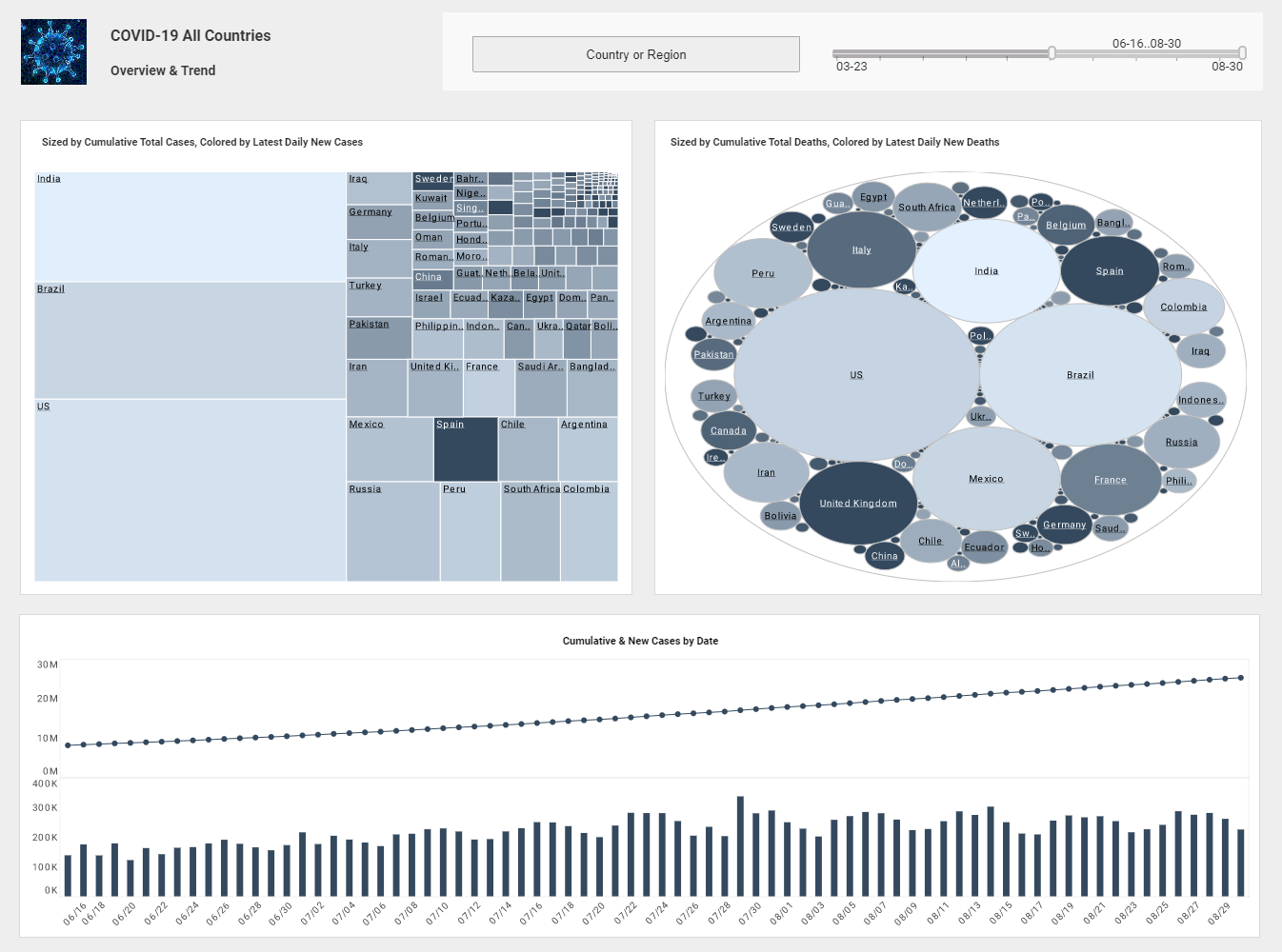InetSoft Webinar: What Is Visual Analysis?
This is the transcript of a Webinar hosted by InetSoft on the topic of "What Is Visual Analysis?" The speaker is Jessica Little, Marketing Manager at InetSoft.
Today we are here to talk about visual analysis and specifically working with data. What is visual analysis? The origin of visual analysis goes back to two of the success stories of computers in this world. One of them was databases. Back in the ‘60s, there were many different approaches to databases. In the ‘70s, relational algebra was developed, and relational databases emerged as a standard.
This gave databases the property that they could support a high level query language. And in particular, they could support parallel and transactional queries, which allowed us to use them for everything. We use them for finance. We use them for medicine, retail, education, on and on like that.
In the ‘90s, once we had all our data online, people started realizing they could do analytical reporting using data warehousing technologies. And then now, in this decade, there has been a focus on ad-hoc querying. Data is absolutely essential to our business. I would say that part of the financial problem we are having right now is because people took their eyes off the data. So this is the one huge success story of computer science.
| #1 Ranking: Read how InetSoft was rated #1 for user adoption in G2's user survey-based index | Read More |
And other one has been visual interfaces which have got a similarly long history, but I won't take you completely through them. But this is a picture of the Xerox Star which was the drag-and-drop graphical interface that we still use very much with the mouse and everything like that. But what we need to do is unify these two.
We have had traditional reporting where people do work with databases and then generate reports. Now there is a new generation of highly interactive visualization tools. A lot of times you have to extract the data out of databases, and what we want to do is combine the two together because if we do that then we can do a more comprehensive visual analysis. We can work with our data visually. And most of us are not database experts. We don’t know how to write database queries.
And so if we create a visual environment to do analyze the data, then we can actually answer all these different questions without writing queries. Traditionally, computer geeks worked with the data directly, and for most people SQL is too complex to learn. So now combining the power of the database with the power of visualization is so much better than getting static reports. You can actually do analysis live on the data and do it visually.
The idea here is to access the database directly, not just an export of the data, but the databases, because that’s leads to more accurate and repeatable analysis. And this is now made possible thanks to effective, easy-to-use visual tools. And if you do that, then you can create a cycle of visual analysis.
This is a diagram that describes that. Basically, ad-hoc questions get answered. These are unpredictable by definition. And this starts a cyclical process where you can discover structures, find patterns, and detect causal relationships. And you don’t have to be a database expert to do it.
So you start with some tasks. You get some data. You find the visual structure that works for you. You develop an insight that allows you to act on something, which is basic to almost everything that we do. The key thing to understand is that there are a lot of loops in here. There is a lot of back and forth. And so you can do this in a visual environment interactively. The iterative process is what visual analysis is about.
Read what InetSoft customers and partners have said about their selection of Style Scope for their solution for dashboard reporting. |
So I was going to give you basically a demo. This is basically my last slide. I have found that always it’s useful when I give a demo to get very concrete and show real examples. This is the kind of data we are talking about, typically relational data, although it can also be out of the data warehouse where you have dates, categorical information and quantitative information, which the data warehousing folks call dimensions and measures.
And so this is the kind of data I want to work with here. And of course, there are lots of other visualization types. There is text visualization. But the focus here is on data since it’s so important and so valuable. And so I was just going to give a little demo, and it's just a simple drag and drop process.



